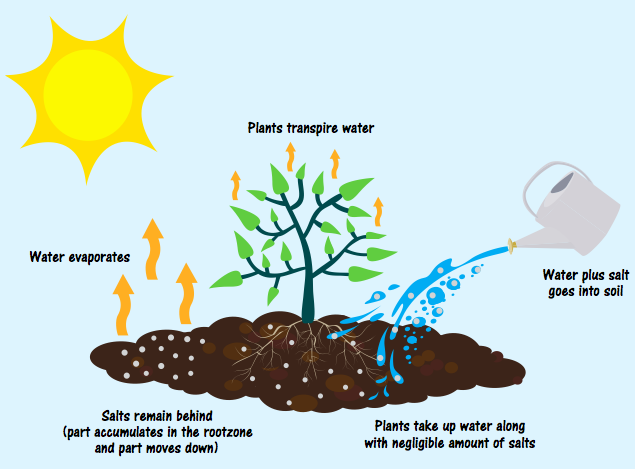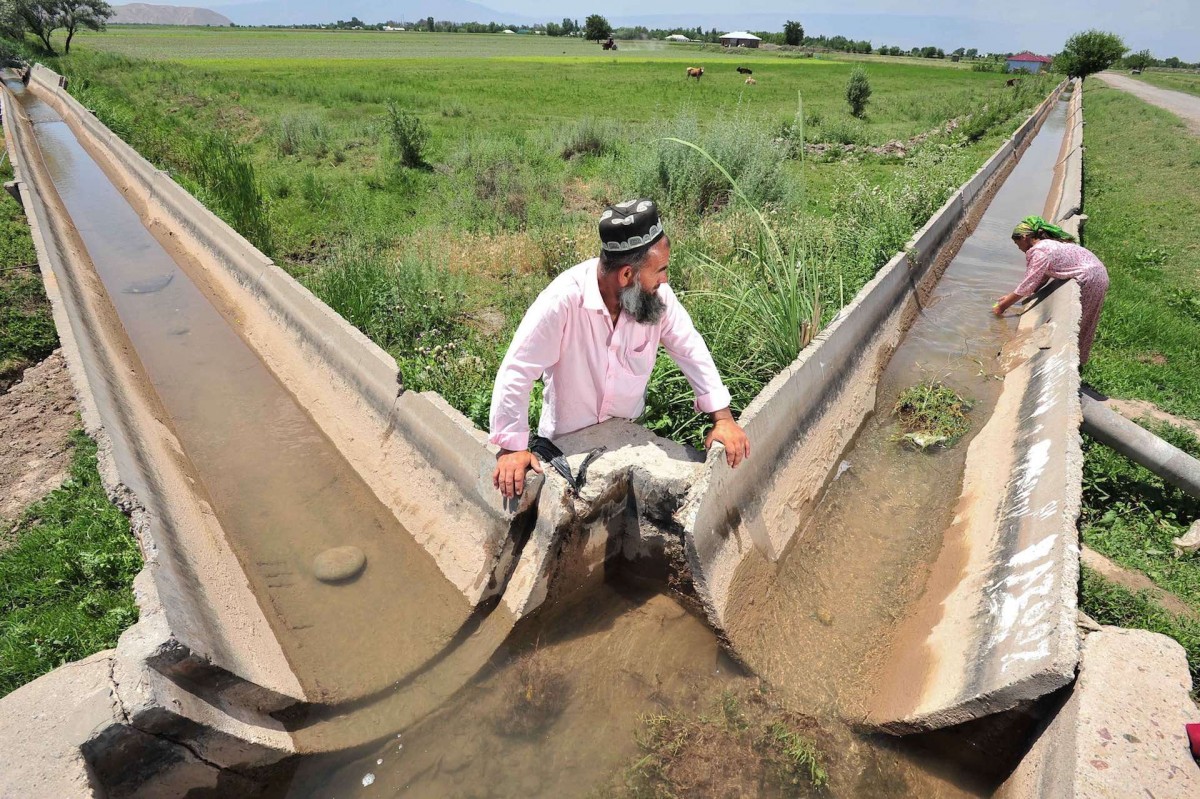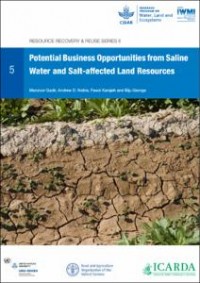For centuries, irrigation has been a huge boon for agricultural productivity. While only 20% of the world’s cropland is currently irrigated, that land produces 40% of all food and fiber (Thenkabail et al. 2010). But the long-term sustainability of irrigated systems, and their ability to provide sustained high productivity, remains a major question, in large part due to salt accumulation in the root zone.

Salinity-related problems are particularly problematic in the arid and semiarid areas where irrigation primarily takes place. The two biggest challenges for farmers are minimizing the amount of water that needs to be drained from irrigated landscapes; and the proper disposal or reuse of the salt-laden drainage water. The global annual cost of salt-induced land degradation in irrigated areas (in the form of crop production losses) is estimated to be around US$ 27.3 billion.
While drainage water is often viewed as a problem, it actually offers a number of opportunities. A new report from the CGIAR Research Program on Water, Land and Ecosystems (WLE) proposes a paradigm shift in the way farmers, governments and donors view saline water and salt-affected soils; rather than disposing of saline water, recycle and reuse it until it becomes unusable for any economic activity, and instead of ceasing to cultivate salt-affected soils, restore them. The report suggests that such changes would result in higher levels of production and a significant contribution to food, feed and renewable energy production without requiring any expansion of current agricultural lands.

‘Potential Business Opportunities from Saline Water and Salt-affect Land Resources’ is the fifth issue in WLE’s Resource Recovery and Reuse Series. The report includes eight case studies of options for potential economic benefits derived from utilizing saline water and reversing salt-induced land degradation in irrigated areas; identifies challenges in large-scale adoption of these options; and suggests pertinent options to address these challenges. A singular message emerges from the report: strategic investments in salt-affected irrigated areas can significantly reduce poverty, generate economic benefits and ensure equitable outcomes for smallholder farmers and marginalized groups, such as women and minorities.
“We believe that the time has come to harness the potential of saline water and salt-affected land resources as potential business opportunities while adding value to the business dimension through resilience against climate change.”
While there are costs associated with investing in preventing or reversing land degradation, or restoring degraded landscapes, they are likely to be much less than the costs associated with allowing land degradation to continue. The cost of “no action” on salt-affected lands is estimated to be a 15 to 69% loss in revenues (dependent on variables such as crop grown, intensity of land degradation and irrigation water quality). This estimate does not account for additional costs such as loss of employment, increased human and animal health problems, reduced property values and associated environmental costs, as salt-affected lands emit more carbon (Qadir et al. 2014).
Recognition of the economic impetus for reversing salt-induced land degradation by farmers, governments and development donors alike is an important step. But because the impacts of degradation can spread beyond just farming communities, there is a need for more than just the typical farm-level salinity management solutions. What’s required, assert the authors, are comprehensive river basin or national level programs that allow for the implementation of cross-discipline solutions—ones that take into account water availability and quality, water politics, national bioenergy production strategies and national water and food security priorities. Through such strategic approaches, barriers to adoption of sustainable land and water management can be removed and the potential crop productivity and environmental gains realized.
Learn more:
- Read the report ‘Potential Business Opportunities from Saline Water and Salt-Affected Resources’
- WLE’s Sustainably increasing land and water productivity research theme
- WLE’s Regenerating degraded agricultural ecosystems research theme















